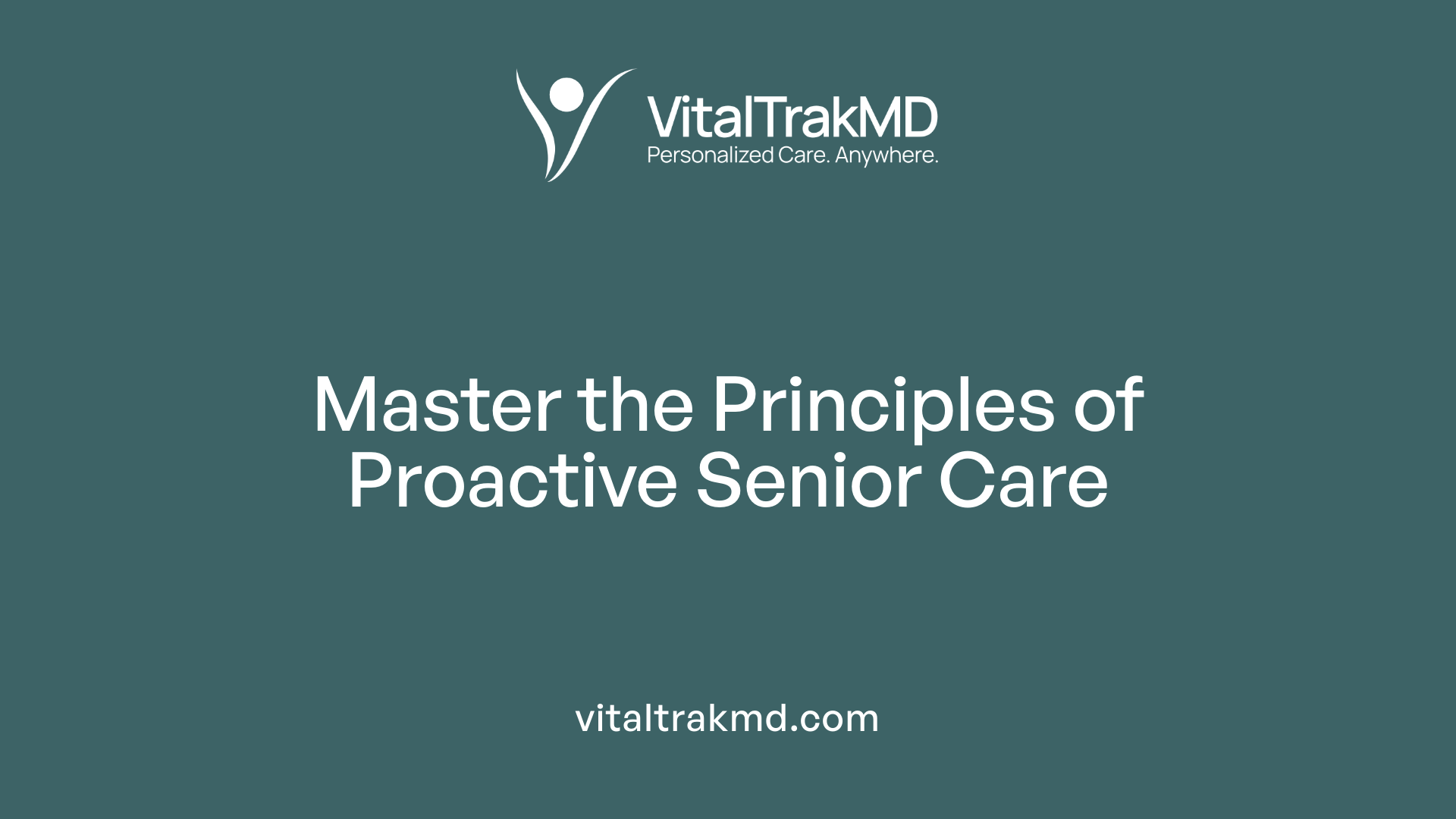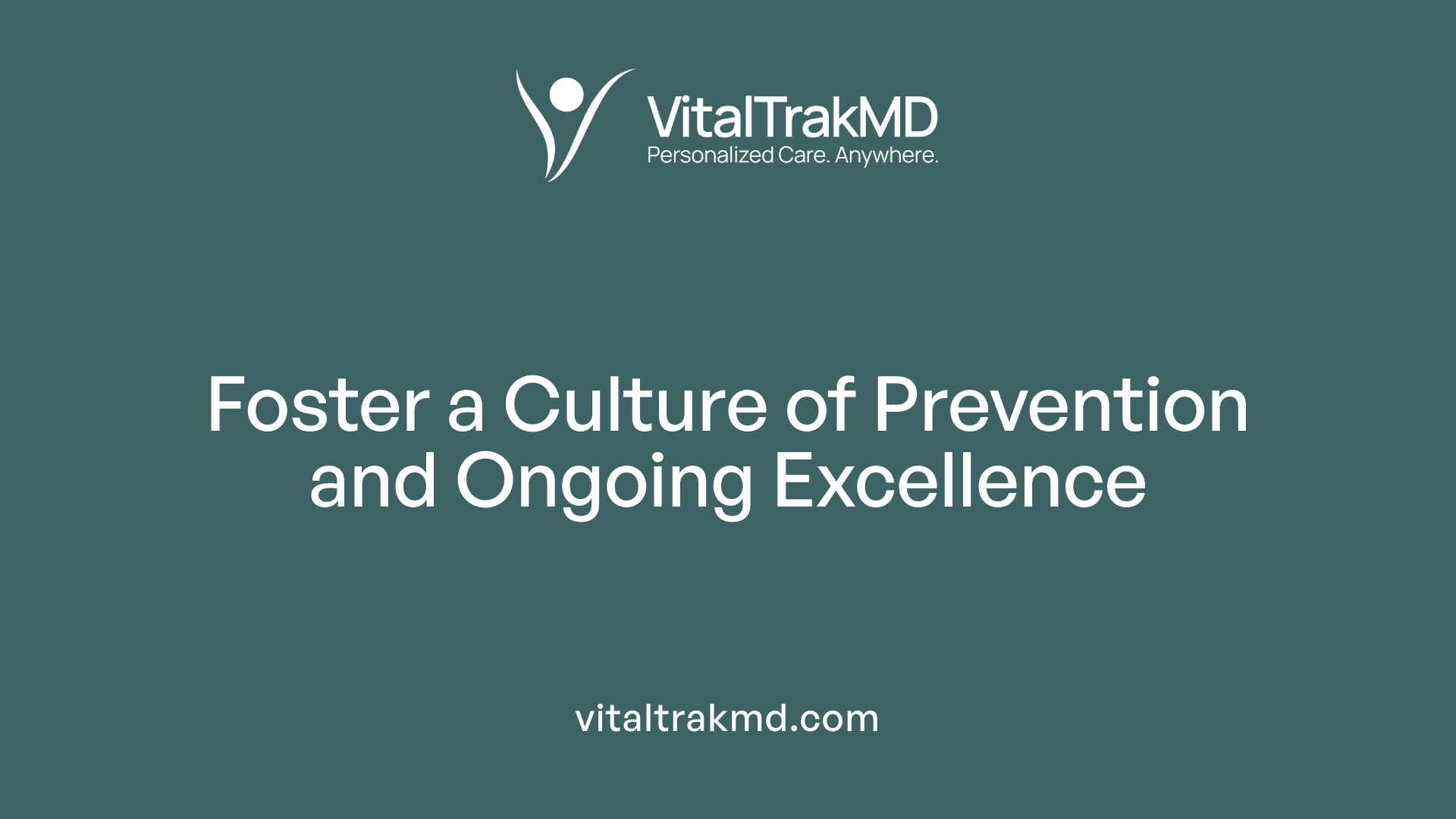Shifting from Reactive to Proactive Senior Care

The Shift Towards Proactive Senior Healthcare
As the global demographic shifts towards an aging population, senior care organizations are recognizing the need to transition from traditional reactive models to proactive, preventive care frameworks. This evolution enhances resident well-being, reduces stress on staff, and aligns with advancements in technology, medical research, and a deeper understanding of aging. Emphasizing early intervention, risk management, and continuous monitoring, proactive senior care offers a sustainable solution to the rising challenges in elder services.
Understanding the Fundamentals of Proactive Senior Care

What is proactive senior care?
Proactive senior care is an approach focused on preventing health issues before they occur or worsen. Unlike traditional reactive care, which responds after a problem arises, proactive care employs early detection, risk management, and continuous monitoring to maintain health and well-being. It involves routine health screenings, personalized interventions, predictive analytics, and fostering a supportive environment that emphasizes safety, dignity, and independence.
How does proactive care differ from reactive models?
Reactive care typically operates after health problems manifest, such as treating falls, infections, or chronic disease symptoms. This model reacts to crises, often leading to higher costs, stress for staff, and less favorable outcomes.
In contrast, proactive care emphasizes anticipation and prevention. It leverages data, technology, and personalized strategies to identify risks early and intervene before crises develop. This shift results in better health outcomes, reduced hospitalizations, and improved resident satisfaction.
Core principles of risk management and prevention in senior care
Risk management begins the moment a resident is admitted, continuing through their entire stay.
- Early risk identification: Use of digital tools like Fynn.io to monitor health trends, subtle changes in behavior, and emerging needs.
- Continuous monitoring: Regular assessments assist in updating care plans promptly.
- Preventive interventions: Implementing measures such as fall prevention strategies, medication reviews, and lifestyle modifications.
- Resident and family engagement: Understanding preferences and expectations to foster trust and tailor care.
- Culture change: Building environments rooted in transparency, dignity, and relationship-centered care.
This proactive approach aligns with modern healthcare goals to reduce avoidable hospitalizations and improve quality of life.
Benefits of adopting a proactive approach
Implementing proactive strategies offers numerous advantages:
- Enhanced resident well-being and independence
- Reduced healthcare costs due to fewer emergency interventions
- Increased staff job satisfaction by minimizing stressful crises
- Lower staff turnover through supportive, relationship-centered environments
- Better overall safety and risk mitigation
Technological innovations driving proactive care
Platforms like Fynn.io exemplify how data analytics are being harnessed in senior care.
| Technology | Functionality | Impact |
|---|---|---|
| Fynn.io | Tracks resident health trends, predicts risks, identifies subtle changes | Lowers emergency move-outs by 30%, improves preventative action |
| Wearables | Monitor vital signs, activity levels | Alert staff to potential health issues in real time |
| Digital dashboards | Provide care teams with actionable insights | Enhances decision-making, care quality |
| Telehealth | Extends access to medical professionals remotely | Facilitates early diagnosis and management |
Transitioning to proactive strategies
Facilities must incorporate risk management from admission through ongoing care. This includes:
- Implementing digital data collection and analytics
- Training staff in risk detection and personalized interventions
- Cultivating open communication with residents and families
- Establishing continuous quality improvement processes
A successful transformation requires strong leadership committed to transparency, ongoing education, and fostering a culture of safety and dignity.
Final thoughts
The future of senior care hinges on the ability to shift from reactions to prevention. Technologies like Fynn.io and innovative care models are making this transition possible, resulting in healthier, happier residents and more sustainable care environments.
Technological Innovations and Data-Driven Strategies in Senior Care

How do digital health tools and proactive health monitoring in transforming senior care?
Digital health tools are revolutionizing the way care is delivered to older adults by enabling constant, real-time health monitoring and early problem detection. Devices such as wearables, mobile apps, and sensors provide continuous data about vital signs, activity levels, and behavioral changes. These insights support a shift from reactive to proactive care, allowing caregivers to intervene early before health issues escalate. For example, fall detection and cognitive decline monitoring help prevent emergencies and foster independence. Virtual reality and telehealth expand access, making healthcare more convenient and personalized, especially for seniors in remote areas. AI-driven analytics enhance diagnostic precision and individualize treatment plans, improving overall outcomes. Smart home technologies further automate safety checks and environmental adjustments. This integration of digital platforms creates connected ecosystems focused on prevention, mental well-being, and safety. By fostering ongoing support and early intervention, these innovations significantly reduce hospitalizations, support aging in place, and promote a higher quality of life for older residents.
How is predictive analytics shaping the future of senior healthcare?
Predictive analytics are at the forefront of transforming senior healthcare by leveraging large-scale health data to forecast individual risks and needs. By analyzing trends from health records, Wearables, sensor outputs, and resident behavioral patterns, these analytics identify potential issues such as falls, medication complications, or disease progression well before symptoms become severe. Platforms like Fynn.io exemplify this approach, continuously tracking subtle health changes and predicting upcoming risks. This foresight allows care teams to prioritize early, targeted interventions, reducing emergency visits and health deterioration. Predictive analytics also promote value-based care, optimizing resource use while enhancing outcomes. They enable personalized care, allowing for tailored behavioral health programs, medication adjustments, and lifestyle interventions that extend independence and improve quality of life. Overall, the adoption of predictive models marks a significant shift toward prevention-focused senior care, making healthcare more anticipatory, precise, and efficient.
What are technological progress supporting preventative care for seniors?
Recent advances such as wearable health devices, advanced AI-driven predictive models, and sophisticated remote monitoring sensors are instrumental in promoting preventative healthcare for seniors. Wearables track vital parameters like heart rate, activity, sleep quality, and detect anomalies that could signal a health risk. AI algorithms process vast data streams, assessing risks such as falls or medication interactions, enabling caregivers to act swiftly and prevent adverse events. Sensors in home environments detect falls or behavioral shifts subconsciously, often before any outward signs emerge. Digital health platforms like Fynn.io consolidate these data sources into intuitive dashboards, providing real-time insights and trend analyses to caregivers and residents. This holistic view fosters early detection, personalized interventions, and continuous health management. These innovations are creating a proactive care environment that enhances aging in place, prolongs independence, and minimizes costly emergency interventions. Collectively, they shape a future where health issues are tackled before they manifest, leading to better longevity and well-being for seniors.
Building a Culture of Prevention and Continuous Improvement

What are the benefits of adopting a proactive approach in senior healthcare?
Switching to proactive senior healthcare offers a multitude of advantages that significantly improve residents' well-being while fostering a more positive work environment for staff. Early detection through routine screenings and preventive care can catch health issues before they escalate, leading to better health outcomes and an enhanced quality of life. This approach emphasizes personalized care tailored to individual needs, which increases engagement and loyalty among residents.
Using predictive analytics and risk modeling, care providers can identify at-risk individuals early, enabling timely interventions and lifestyle modifications. These measures often result in fewer hospitalizations, emergency visits, and reduced healthcare costs overall. Wellness initiatives focusing on prevention also support long-term health maintenance, decreasing the likelihood of chronic disease development and increasing resident satisfaction.
In summary, proactive care aligns resources around prevention, leading to a more efficient and cost-effective healthcare system that prioritizes continual health management and improves outcomes for seniors.
A New Healthcare Paradigm for Aging Populations
As senior care continues to evolve, embracing a proactive model rooted in risk assessment, technological innovation, and continuous improvement promises to deliver better health outcomes, enhanced resident satisfaction, and sustainable healthcare systems. By shifting focus from managing illness to preventing it, providers can extend independence and quality of life for seniors, effectively preparing for the demographic shifts ahead. The integration of digital health tools, data analytics, and organizational change management will be crucial in realizing this vision. Ultimately, proactive senior care represents a fundamental transformation — a meaningful shift toward healthier, more engaged aging that's aligned with the future of healthcare delivery.
References
- Proactive vs. Reactive Senior Care: How Better Insights Improve ...
- From Reactive to Proactive: A Better Future for Senior Living ...
- The Shift from Reactive to Proactive Healthcare - Cognitive Systems
- Healthcare Evolves From Reactive to Proactive - PMC
- Proactive Healthcare: Moving Away from Reactive Care Models
- Shifting the dial from reactive to proactive healthcare - Huma
- Proactive vs. Reactive Care: Why the Future of Healthcare Leans on ...
- The Strategic Shift: From Reactive to Proactive in Healthcare Facilities
- Reactive to Proactive Care: How to Enable Individualized and ...
- Taking a Proactive Approach to Senior and Elderly Care
Recent articles
Want to Feel Better and Live Healthier?
Join hundreds of patients taking control of their health with personalized care that fits their life – not the other way around.
Rated 4.8/5 by 32+ customers







